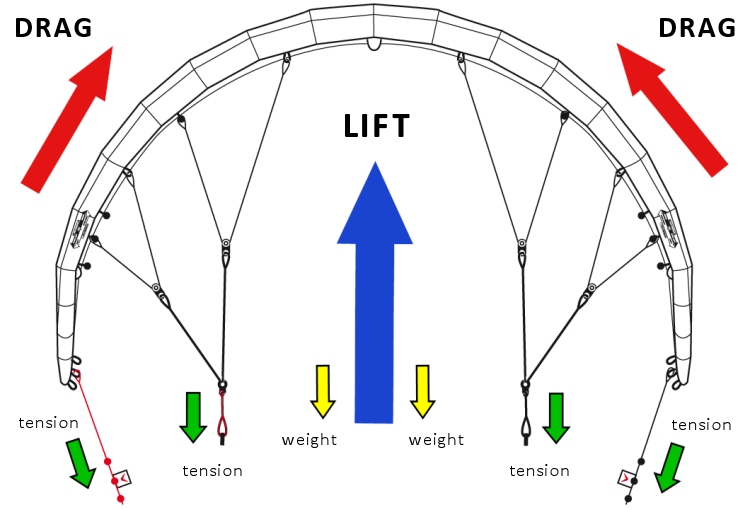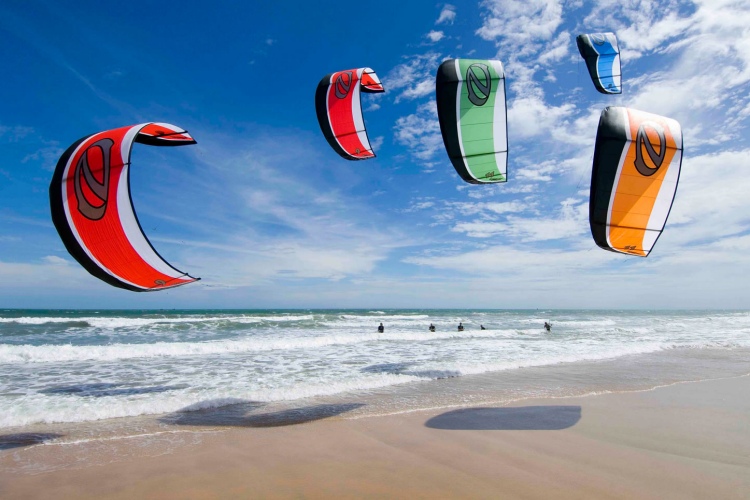Kiteboarding is a wind sport. Apparently, it seems clear why kites catch the wind and fly up in the skies.
However, there are a few principles and forces surrounding kites and the sport of kiteboarding that you should understand.
The relationship between kites and wind is always the same, whether you're riding a C kite, a hybrid kite, a bow kite, an SLE (Supported Leading Edge) kite, or a foil kite.
Lift and drag - plus tension and weight - are the aerodynamic forces that get into play when you're kiteboarding.
Lift and Drag
In this particular case, drag - sometimes called air resistance - is the force in which wind hits and pushes the kite horizontally, just like in a simple diamond kite.
Then there's lift, a vertical variable. A classic kite lets the air flow around and forms a simple airfoil.
In order to work effectively, the kite's angle of attack should be carefully designed.
If this angle is too low, a soft airfoil will deform as internal pressure is lost, and even the more rigid inflatable kites will drop the nose and enter a dive with the sail luffed.
On the other hand, kites with a high angle of attack will no longer make air flow smoothly over the top surface of the airfoil.
In this case, a kite will stall.
And how do kiteboarders turn and change direction? By pulling down one line, riders are increasing the load on one side.
Interestingly, when you start turning your kite, the lift shifts to the opposite side, forcing the kite to slightly bend/turn (adverse yaw) towards the unwanted side.
However, the rider's power is usually enough to turn the kite towards the desired side. This is the load-shifting mechanism.

Power and Depower
The other control mechanism is the depower system.
The depower system allows kiteboarders to change the length of the front lines by moving the control bar closer to the body or away.
If you push the control bar away from the rider, the kite depowers. If you pull the kite bar, you will power up your kite.
To sum up, kites have their own optimal wind range.
In light wind conditions, lift forces will be greater, and the kite will display a lower line angle.
In overpowered conditions, lines will be extremely tensioned, and horizontal drag force will overcome lift power.
Now that you've understood why kites fly, it's time to learn why riders can only fly them in a determined downwind area.
